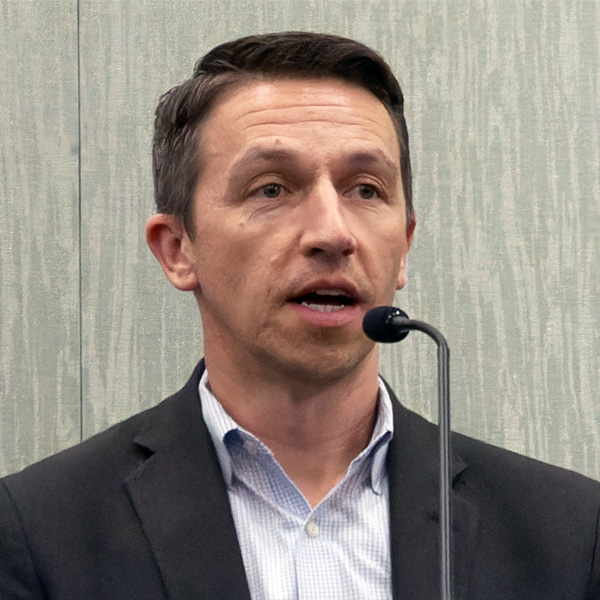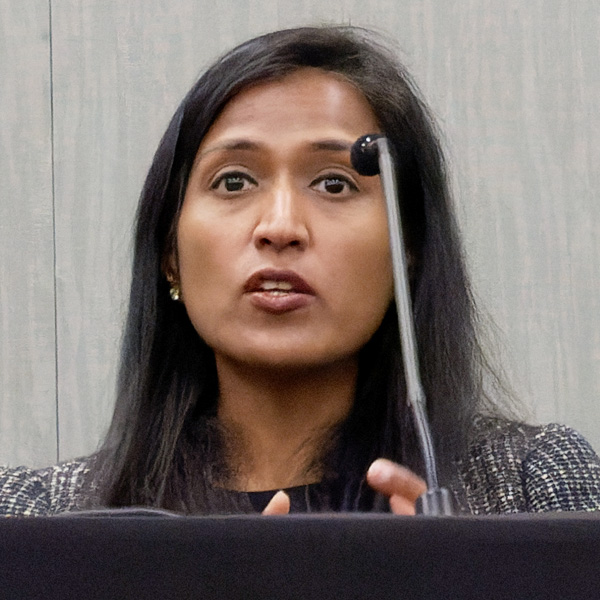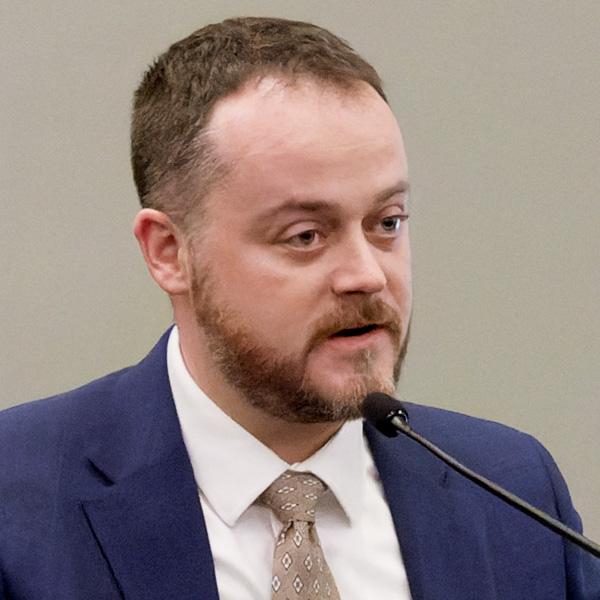ALBANY, N.Y. — Here are some opinions, updates and words of wisdom from a few of the more than 60 panelists at last week’s New York Energy Summit:
 Michael Daschle, Brookfield Properties | © RTO Insider LLC
Michael Daschle, Brookfield Properties | © RTO Insider LLCMichael Daschle of Brookfield Properties said his company is preparing two designs for a new building: one all-electric, and one that will incorporate natural gas. The all-electric version would be 40 feet taller to accommodate additional equipment and significantly more expensive to build, but it would carry the cachet of being emissions-free, which means a lot to some prospective tenants. “You have to go back to your investors … and say, ‘Look, this is not necessarily going to achieve the same returns as a traditional gas building, but there are all those other considerations to think about.’”
Mike DeSocio of NYISO raised a warning flag on retiring fossil fuel generation before new renewable energy projects come online.
“There’s plenty of projects in the pipeline; the issue is we need some projects to be commercial, and that we have not seen yet,” he said. “So the outlook is delicate. … We are expecting the first wave of peaker retirements in 2023, and the next wave would be in 2025.
 Mike DeSocio, NYISO | © RTO Insider LLC
Mike DeSocio, NYISO | © RTO Insider LLC“At the same time, we’re staring at a future reserve margin of zero-ish, maybe negative, and we’re very interested to see how the forecast might come out.”
Dawn Fenton of Volvo Group North America spoke about the transition away from internal combustion engines in heavy-duty vehicles. “I think we’re in a real paradigm shift in the transportation sector. … I’m also excited about the fact that I feel we’ve hit a transition even in the last several months, that we’re getting beyond the pronouncements and the lofty goals. … We’re finally getting to the point of people recognizing the challenges of charging infrastructure; the challenges of permitting reform; all the work that needs to be done to actually realize this goal.”
Shweta Kapadia of Crayhill Capital Management highlighted the impact that financial volatility has had.
 Shweta Kapadia, Crayhill Capital Management | © RTO Insider LLC
Shweta Kapadia, Crayhill Capital Management | © RTO Insider LLC“I think one thing that … developers are doing and we as vendors are doing is, we are very cautious when we are signing a [power purchase agreement] because we did see a lot of projects that signed PPAs … are now underwater because prices have gone up.”
Maureen Leddy, director of the New York Department of Environmental Conservation’s Office of Climate Change, said the state’s climate law requires her agency to promulgate key emissions-reduction regulations by Jan. 1, 2024. Given the complexity of those rules, and the amount of stakeholder input and feedback DEC will need to seek out, the statutory deadline is “very ambitious and highly unlikely.”
Kara Podkaminer, of the U.S. Department of Energy’s Vehicle Technologies Office, spoke of the importance of not only redesigning central components of modern life but doing it so that they will be functional together.
 Kara Podkaminer, DOE | © RTO Insider LLC |
Kara Podkaminer, DOE | © RTO Insider LLC |“The transportation system and the power system are two of the largest systems we’ve ever made, and now we need to actually make them work together, because if we don’t, we actually need to build more infrastructure.”
Marguerite Wells of Invenergy said she does not expect a significant increase in onshore wind capacity in New York, beyond what is already in the pipeline. “Most of the windy hilltops already have turbines on them, and most of the remaining windy hilltops are nowhere near transmission lines. So I don’t believe there’s all that much more wind resources to build out because fundamentally, that wind is competing in every [request for proposals] with solar.”
David Whipple of Empire State Development was asked why a green energy manufacturer might build a new factory in New York rather than Georgia or some other state where the cost of doing business is lower.
 Dave Whipple, Empire State Development | © RTO Insider LLC
Dave Whipple, Empire State Development | © RTO Insider LLCHe cited net-zero policies, which have become an important consideration for some corporations: “If they want to manufacture this technology with green energy, they’re going to get there a lot faster in New York than they would in many Southern states.”
Joe White, Consolidated Edison’s (NYSE:ED) distributed generation ombudsman, was asked with his fellow panelists what had been the best thing and worst thing to happen in recent history. He identified the COVID-19 pandemic as both best and worst, because it has been so disruptive and because so many people have adapted so well in response: “On both sides of the meter, we’ve had to be more creative, more innovative than we ever have before in trying to get things done from an office and field environment.”

